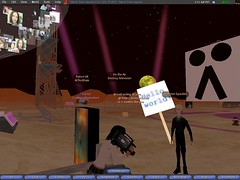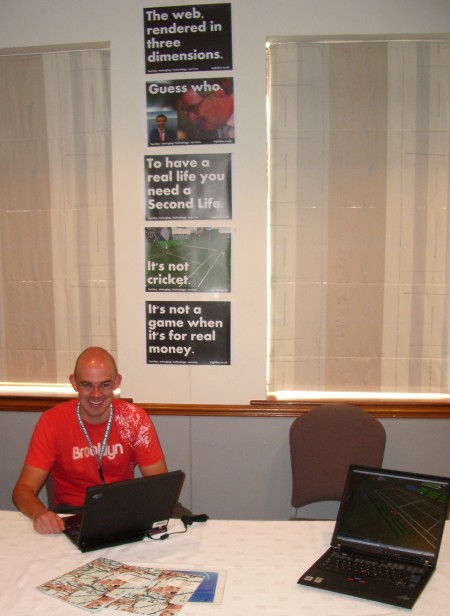Matt Biddulph, the brains behind the Second Life Flickr screen and the Last.fm BBC Radio 6 hack (which I mentioned here on Eightbar a while ago), has come up with something even cooler. By way of introduction he points out that…
Many people find the creation of 3D models in SL to be rather tricky. This is because there’s no built-in way to import polygon data as a mesh of 3D coordinates from an external modelling tool. Imagine if there was a factory object that could read a list of coordinates and spit out the results straight into the world, like a virtual 3D printer.
First of all, I love the virtual 3D printer analogy. What Matt seems to propose is automatic creation of primitive objects, such as those used in POV-Ray or Second Life, from arbitrary 3D data. Doing this efficiently is pretty much the unsolved problem in this space at the moment, as nicely summarised by Troy McLuhan in a comment on a 3pointD post earlier this year.
This is something the Prim.Blender project can’t do, requiring you to build with SL-aware prims within Blender instead. My SketchUp hack gets very slightly closer, but in a very crude and limited way (so crude and limited it is still not publicly available, despite having been Slashdotted).
It looks like Matt already has something working. I can’t wait to learn more about this.




